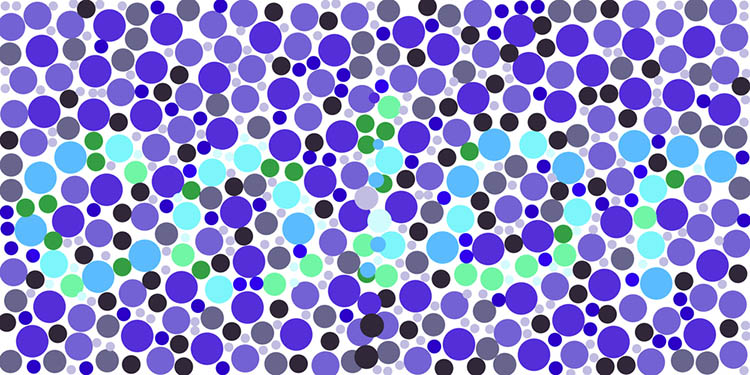Color blindness is an often misunderstood condition that impacts how you perceive color. While many people assume that you can only see in black, white and gray, the reality is more complex than that. More men than women suffer from color blindness, at a rate of 8 percent to .5 percent. Learn more about what it’s really like to live with this condition.
Causes of Color Blindness
The typical causes of color blindness are genetic – you’re born with the condition having inherited it from your parents. If one or both of your parents have the genes that cause this condition, they pass them on to you. The reason that more men have color blindness than women is the lack of a second X chromosome. Since they don’t have another chromosome to refer to in the event of a defect, they end up being more likely to suffer from a form of it. Caucasian men have the highest rates of hereditary color blindness, at 5.6 percent. Asian men come in at 3.1 percent, Hispanic men at 2.6 percent and black men at 1.4 percent.
The other prominent cause is damage that involves the eye, the optic nerve or the areas of the brain that handle your visual processing. Both types of color blindness causes can’t be cured, but you have many ways to manage the condition so it doesn’t impact your quality of life.
Types of Color Blindness
Color blindness doesn’t necessarily mean that you’re unable to see every color. It all depends on the specific type that you have.
Red-Green
When someone says that they’re color blind, they’re usually referring to the red-green category. People with this condition have varying impairments on distinguishing red and green colors, with the associated cones being limited in number in their eyes. These shades appear dull, grey or black and represent difficulty in situations such as traffic lights. They may also have difficulty telling blue shades apart from one another due to the amount of red or green in each color.

Blue-Yellow
Blue-yellow color blindness primarily impacts the color spectrum encompassing blue and yellow shades. In most cases, it manifests as an inability to tell blue apart from green. Yellow shades may be confused with red or similar shades.
Total Color Blindness
Total color blindness is rare and refers to people who can’t perceive any colors or can only see one color. This result occurs due to a lack of cones in the eye. If they have any cones, they’re all the same type. Beyond not being able to tell colors apart, totally color blind people may also suffer from other vision problems.
Compensating for Color Blindness
While color blindness doesn’t have a cure, you have many tools and resources to compensate for it to reduce the challenges it brings to your life. For clothing, you can adopt a wardrobe that includes the colors you can see, ask for help from friends and family or use a styling service to keep everything matched up.
Some computer programs, operating systems and mobile apps have color blind settings, which shift the colors used so you can easily distinguish different elements. You can even end up with glasses that have a similar effect.
Do you have more questions about color blindness or have concerns that you’re suffering from it? Contact our ophthalmologists to learn more about this condition and to get tested.
Posted October 3, 2017 by Silverstein Eye Centers